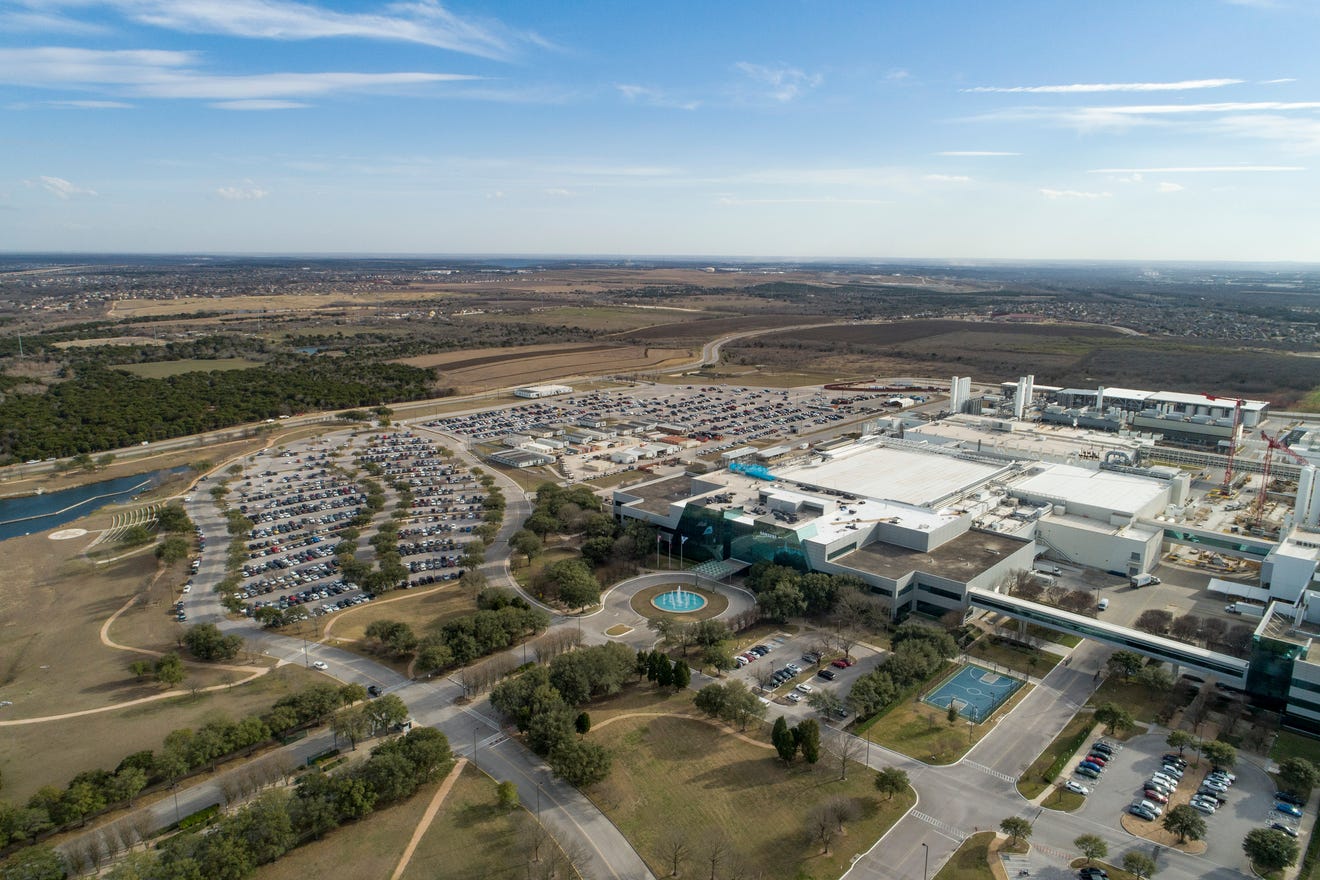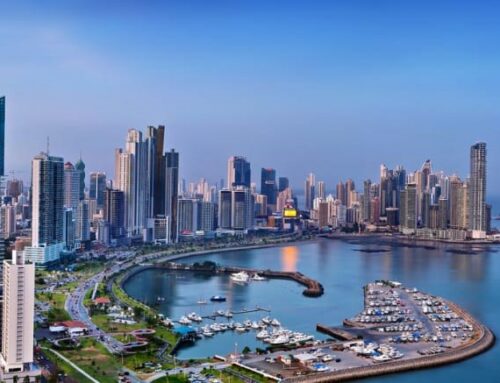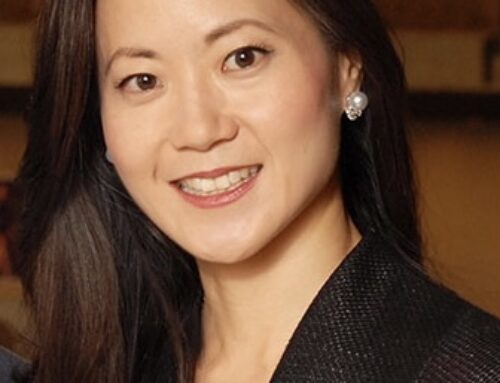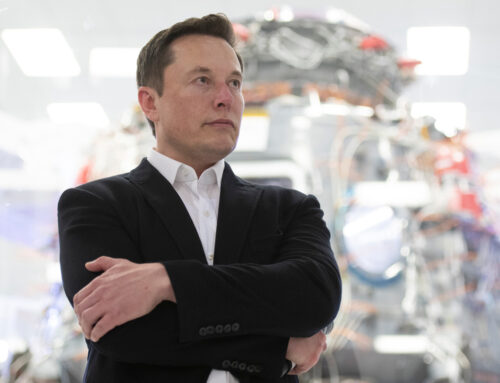Samsung is seeking a taxpayer-subsidized incentives package worth more than $1 billion to choose Austin for its next big facility – a 7-million-square-foot next-generation chip fabrication plant that would be valued at more than $17 billion and create 1,800 jobs, according to documents filed with the state.
The documents made public by the Texas comptroller’s office Thursday show that Samsung is seeking tax abatements from Travis County, the city of Austin and the Manor school district. Samsung is also seeking an incentive deal from the state’s Texas Enterprise Fund, according to the documents.
The company wants a 100% tax abatement over 20 years from Travis County, which would be worth $718.3 million. Travis County spokesman Hector Nieto said the county has not received a formal application from Samsung. He declined to comment further.
The tech giant also is seeking 50% tax abatements from the city of Austin that would be worth $87.2 million over five years, according to the documents.
The company said in a statement that Austin is one of a number of locations under consideration and no decision has been made.
“Based on various factors, we are reviewing the possibility of expanding our semiconductor manufacturing facilities. A number of global locations, including multiple candidates within the U.S., are under consideration. However, no decision has been made at this time,” the company said.
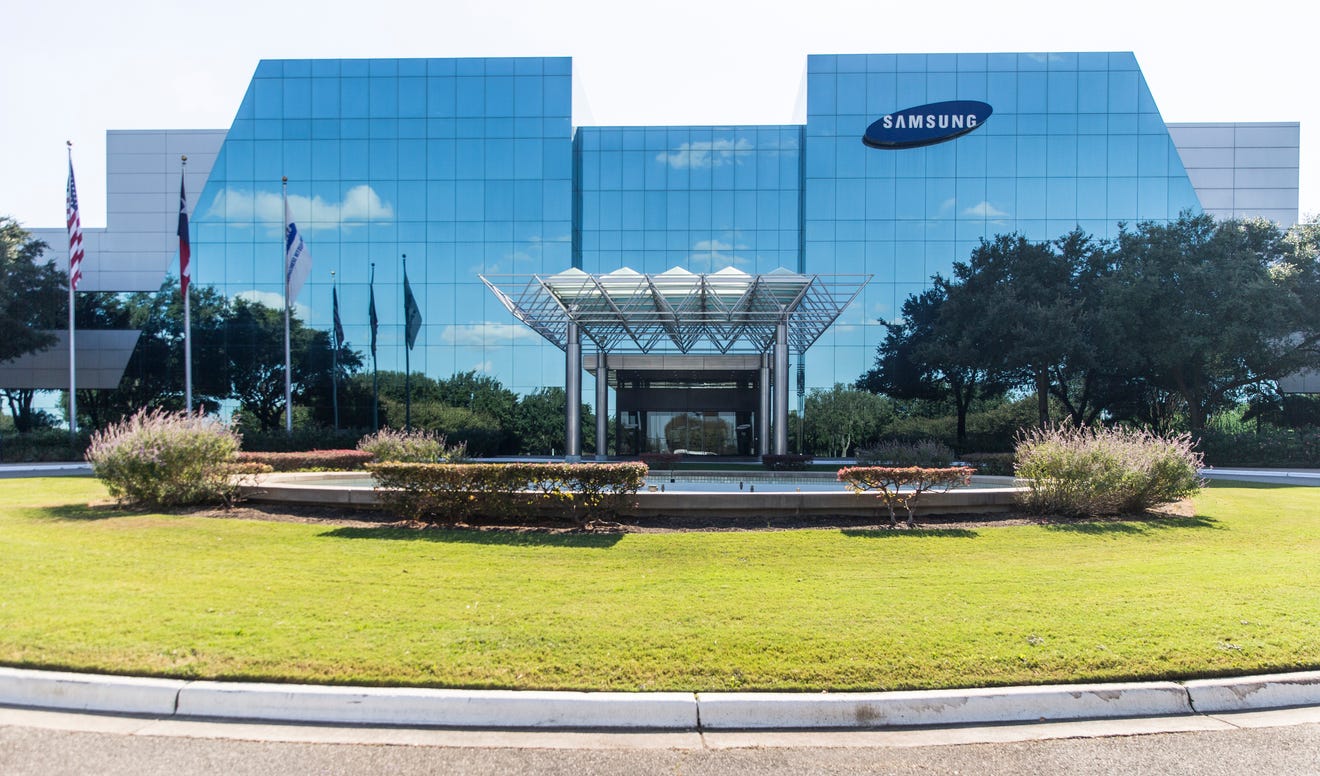
In addition, Samsung is seeking a Chapter 313 incentive agreement with the Manor school district. That refers to Chapter 313 of the Texas Tax Code, which allows school districts to grant property tax breaks for economic development projects. The state is then required to repay the school district for the amount of property tax it gives up in the agreement. The proposed agreement calls for saving Samsung $252.9 million in taxes to the school district.
Samsung projects that the proposed new facility would have an initial average annual wage of $66,254 for its employees. The facility could have a local economic impact of $8.6 billion over its first 20 years of operation, according to the documents filed with the state.
Angelos Angelou, CEO of Austin-based Angelou Economics, said the planned chip plant would be a huge boon to the region. But he also said the requested tax breaks –particularly the 100% abatement from Travis County – are likely opening salvos in planned negotiations.
“I don’t think there is a precedent for a 100% tax abatement anywhere in the country,” Angelou said. “I do think if they came down to maybe 15 years, or maybe 20, at 70% to 80% (abatement), there could be a deal had.”
Austin is already home to Samsung’s largest operation outside of its South Korea headquarters. Landing the new facility would add to a recent string of stunning economic development wins for Austin, which in the past six months has seen Tesla start work on a $1 billion assembly facility locally and tech giant Oracle formally move its corporate headquarters to Central Texas.
The Manor school district previously approved two Chapter 313 agreements with Samsung for its existing facility here. Those agreements – one created in 2005 and the other 2012 – are ongoing and are providing the tech giant with an estimated $200 million in tax breaks over a 17-year period that ends in 2023
If Samsung chooses Austin for the new chip plant, work would start on it as early as the second quarter of this year, with a planned completion date by the end of 2023, according to the documents filed with the state.
Ken Herman: A little love for Austin City Hall
Amber Gunst, CEO of the Austin Technology Council, said Samsung considering Austin for this significant expansion is a good thing for the region’s economy.
“As there are other highly competitive markets seeking to win this expansion deal, it is imperative that our state and local governments work together to ensure Austin comes out on top,” Gunst said. “Not only does this provide 1,800 jobs that will be available to Central Texans of all education and skill levels, this expansion creates an even stronger relationship between Samsung and Austin, a relationship we value immensely.”
Samsung is also considering incentives offers from New York, Arizona and another site in Texas, according to the documents filed with the state.
“This project is highly competitive, and the company is looking at alternative sites in the U.S. including Arizona and New York, as well as abroad in Korea where Samsung Austin Semiconductor’s parent company is headquartered. … Because of its strong ties to the local community and the successful past 25 years of manufacturing in Texas, Samsung Austin Semiconductor would like to continue to invest in the city and the state,” Samsung said in its application.
“Due to the higher tax cost of operating in Texas, the appraised value limitation is a determining factor. Without the appraised value limitation award, the company would likely locate the project in Arizona, New York or Korea,” the company said.
Patrick Moorhead, an Austin-based analyst with Moor Insights and Strategy, said Central Texas will no doubt face fierce competition to land Samsung’s expansion.
“Austin will have to compete for any future leading-edge semiconductor facility. Cities from around the world want access to this, as it brings so many high-paying jobs to the area,” Moorhead said.
South Korea-based Samsung is one of the world’s largest memory chip and smartphone makers. The company is planning to build an advanced logic chipmaking plant that would be a significant step forward for the company’s overall chipmaking capabilities. The facility would improve Samsung’s ability to compete with other chipmakers, and it could help Samsung become the chipmaker of choice for companies including Apple and Advanced Micro Devices.
Daniel Ives, an analyst with Wedbush Securities, said Samsung is trying to diversify its manufacturing locations, including in the U.S., and it has made significant technology strides at the Austin facility in the past, which may be why the company might want to double down on the location.
Ives said Austin is also on its way to becoming the hottest destination for technology companies to build out.
“Samsung has found the trend of Tesla, Oracle and others that are viewing Austin because of the engineering talent, because of its location, where there’s significant room to build out factories,” Ives said “As it becomes more of a tech hub, no different than what we’ve seen in Tel Aviv and Silicon Valley, it becomes a flywheel effect.”
Listen to the Statesman’s news podcast: The best local news, 8 minutes a day
Industry analyst Roger Kay, with Endpoint Technology Associates, said that while Samsung is exploring different locations, Austin has a lot to offer.
“Samsung already has a large presence there, and Austin is a good location for tech companies. It has an educated workforce experienced in technology. Texas has lenient corporate laws and an attractive tax regime. And the weather is great eight months a year,” Kay said.
Ives said the recent economic development for the Austin region is the “tip of the iceberg” for potential technology growth for the region.
“In 20-plus years covering tech, there have been many cities over the years that have had false starts that were going to be the next mini-Silicon Valley, from Atlanta to Boston to Montana, and didn’t really come to fruition to meet those expectations. … Austin, I think, is the real deal. Austin is becoming a key destination because of engineering talent, the cost of living relative to California as well as New York City, and it has potential to attract more and more tech companies over the coming years.”
While Samsung has said that no decision has been made on a site for its new facility, it has already taken some steps in recent months that could indicate it is preparing for an Austin expansion.
In October, the company bought seven tracks of land totaling 257.5 acres near its existing Northeast Austin facility. In December, the company also requested a zoning change to allow for more industrial uses on three tracts.
The Austin City Council recently approved a plan to relocate most of the existing Samsung Boulevard, which runs alongside Samsung’s current Austin facility. Documents filed with the city call for removing a section of Samsung Boulevard from East Parmer Lane just before it runs into the Pioneer Crossing subdivision. In its place, a new spur of Braker Lane would be built to route traffic from the subdivision onto the new Samsung Boulevard.
Samsung has had operations in Austin since 1997. It has a fabrication plant in Austin, where it has previously said about 10,000 people work, of which about 3,000 are Samsung employees and the rest are contractors. Samsung also has a research and development facility project in Austin. The company has said it has invested about $17 billion in its Austin campus through the years.

